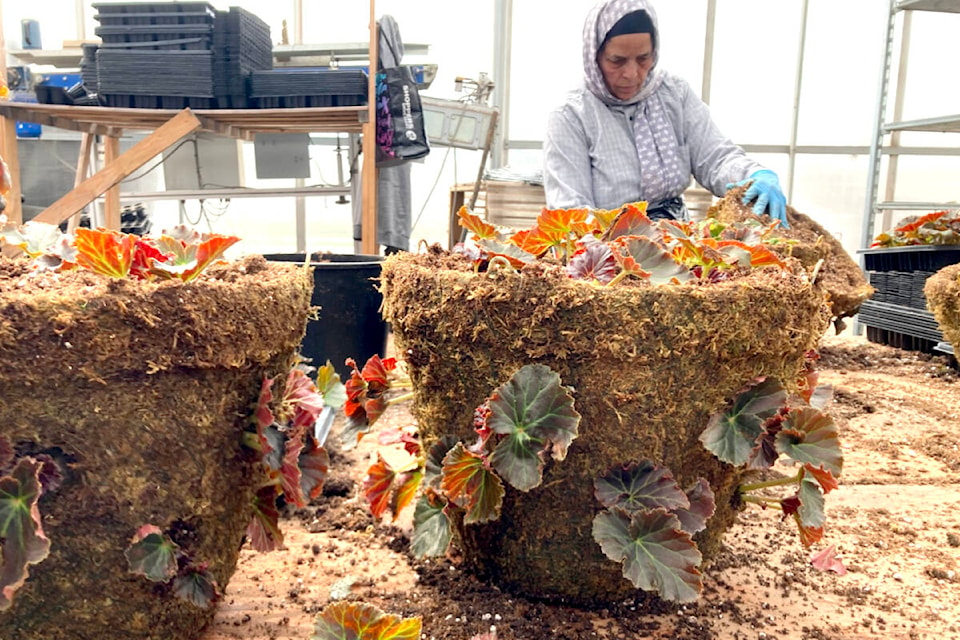By Robyn Roste/Special to Aldergrove Star
Despite a slow start to the growing season, trees are budding and many spring tubers are in full bloom.
And with it, gardeners are stocking up on seeds and plants from local nurseries to get ready for their outdoor gardens.
For the hobby gardener, planting and tending a vegetable or flower garden may feel more like a labour of love.
But, while time spent tending seedlings, watering, warding off pests, pruning, and weeding may result in a bountiful harvest – at least in recent summers those results could also turn out to be somewhat disappointing.
There are many reasons why a garden may not produce a bountiful crop. For instance, plants need healthy soil, a lot of sunlight, consistent temperatures, and the right amount of water.
But, as John Folkerts noted, not everything is within the gardener’s control. And that’s where the disappointment might arise.
With the challenging weather this region has experienced during the past few years, gardeners may find better results by practising xeriscaping – which has become popular in desert areas in the United States and Canada – said Folkerts, co-owner of Linnaea Nurseries in Langley.
RELATED – Gardening help in the palm of your hand: 5 apps, phone tips
“Plants that you use in dry conditions probably need to be looked at more here. They can handle difficult conditions,” he elaborated.
“I also think we need to look at more of the native plants.”
The concept behind xeriscaping is to design a low-maintenance, biodiverse greenspace, which is planted according to the zone and climate.
Compared to exotic plants, native plants are generally hardier, require less fertilizer and water, and have a smaller chance of being affected by frost, drought and diseases, Folkerts said.
They’re also more likely to support local wildlife and attract insects such as bees and butterflies.
“The reason why native plants grow so well here is because they’ve adapted well to the climate,” Folkerts said.
“Yes, it’s changing and some plants may not do as well in the future, but generally they grow well.”
Aldergrove, and the rest of Langley, are located in what is known as hardiness zone 8a.
This is important to know when researching which trees and plants to use, since certain species are better suited to this zone than others.
For example, rhododendron is suited for zones 4 to 8, an azalea is suited for zones 5 to 8, but aloe is suited for zones 9 to 11.
Speaking of trends in gardening, edibles are a hugely popular this year, said Fred Wein, co-owner of Clearview Garden Shop on 56th Avenue.
“With the price of vegetables going up, growing your own can be a great opportunity to save some money,” Wein noted.
For people new to gardening, he suggested planting easy-to-grow herbs or vegetables such as tomatoes, strawberries, blueberries, lettuce, and corn.
Landscaping can be another satisfying way to learn a new skill and add beauty to a yard or porch.
For these, Wein recommends working with flowers such as gaillardia or clematis and incorporating plants with character that won’t grow too large.
“Just remember, if you want to grow a big top, it needs big roots. This means you have to prepare the soil so it’s soft and easy to grow roots,” Wein said, adding that all plants require fertilizer, and it will help them be successful.
For beginner projects, experts suggest concentrating on perennials and seasonal plants known to thrive in the Fraser Valley.
When purchasing seeds or plants from a nursery, the tags should indicate the zones they’re best for.
Since zone 8 is one of the mildest in Canada, with one of the longest growing seasons, there’s a wide variety of plants that will thrive here, unlike hot areas (zones 12 and 13) or cold areas (zones 0 to 3).
READ MORE – LANGLEY GREEN THUMB: Stressful season for gardens
.
Hanging basket care tips
Most nurseries and garden centres have a variety of hanging baskets on display, including impressive solenia begonias – known for their wind and sun tolerance and expansive blooms.
■ Bring on the sun:
In selecting placement, keep in mind that these easy-to-grow flowers love sunlight and warm weather.
■ Peat moss welcome:
Ensure the soil is well drained in the hanging basket – even better if it is peat moss.
■ Dripping a good thing:
Water your hanging baskets every day, and until they’re dripping out of the bottom.
■ Avoid burning blooms:
Try to water at the root level, rather than on the flowers and leaves.
■ Buy the bloomers:
If you’re planting now, purchase blooming begonias from your local garden centre (seeds, tubers, or roots should be started indoors in late winter).
–Tips provided by Clearview Garden Shop
.
Have a story tip? Email: news@langleyadvancetimes.com
Like us on Facebook and follow us on Twitter.
